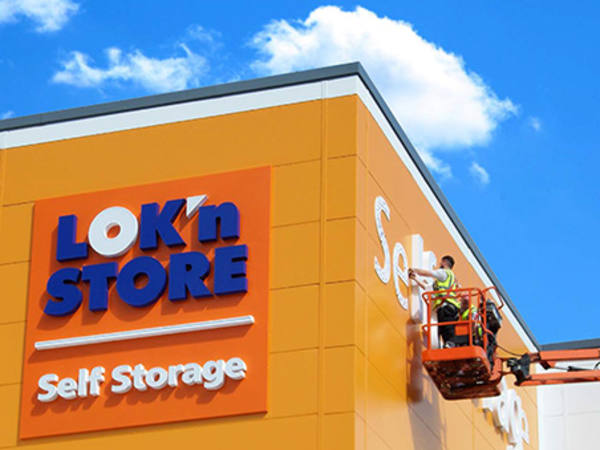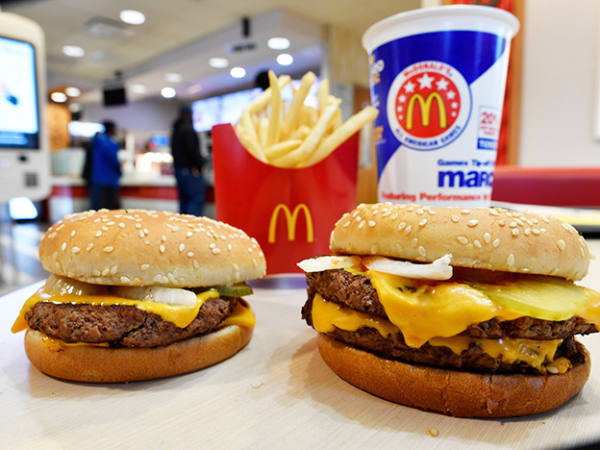It is inevitable that many UK companies will see profit margins squeezed. Last week, the Bank of England warned that the UK would slide into a recession as inflation potentially rises above 10 per cent. This would mean companies facing softening demand for their products while needing to manage rising raw material and energy costs.
In the short term, this isn’t great news. But rising wages and raw material costs will force companies to cut spending elsewhere, potentially improving operational efficiency and therefore leaving them ready to prosper when the inflationary forces eventually abate.
“One of the problems the UK has had for a while is a lack of productivity growth but, ironically, as labour costs grow we should see a rise in productivity as companies invest more in technology,” explained Simon Gergel, portfolio manager of Merchants Trust (MRCH). “Supermarkets are a good example, they have been investing in more electronic checkouts.”
Precedent from the 1980s
At the beginning of the 1970s, US car companies Ford Motor (US:F) and General Motors (US:GM) were two of the five largest companies in the world. Over the next 15 years, both would see their profitability swing wildly. During the inflationary period of the 1970s they managed to increase profits through price rises. But when the US Federal Reserve fund rate rose to over 20 per cent at the end of the decade to tackle inflation, the ensuing recession saw both companies slip to losses.
In 1980, GM and Ford Motor made $2.89bn and $1.17bn of profit respectively. The following year they slipped to losses of $762mn and $1.54bn. This was the first time they had failed to make a profit since the second world war. Rising inflation, slowing demand and increased competition from Japanese manufacturers combined to create a potentially existential crisis for two of the US’s largest employers.
This crisis proved to be a catalyst for the US automotive industry. To tackle declining profitability Ford and GM slashed costs through operational improvements. When inflation abated and GDP growth returned in the 1980s, both companies were more efficient than ever. Between 1981 and 1986 real revenue per employee doubled at each company. In 1986, GM and Ford produced $4.0bn and $2.5bn of profit while employing significantly fewer people than in 1980.
Which companies are becoming more efficient?
The stories of Ford and GM won’t be repeated by every company but there are many in the UK that have made significant operational improvements in the last year. To identify these businesses, Investors’ Chronicle ran an analysis on FTSE 350 companies, looking at the change in the difference between gross and operating margins. Financial services firms topped the charts given their relatively few moving parts so we have looked at the companies that could see greater gains from more efficient operations.
Gross costs only include the cost of making the goods. This typically includes just the cost of labour and raw materials. Both factors that are somewhat out of companies’ control and have been rising over the last year. Operating costs include the gross costs plus the operating costs of a business. This could include marketing, rent, travel and repair costs.
A company's operating margin may fall because of rising labour and raw material costs. But if a company is closing the gap between its gross margin and its operating margin, then it is likely it is making operational improvements. When the inflationary pressures start to ease, its margins should then improve.
The fantasy figurine producer Games Workshop (GAW) saw its gross margin fall six percentage points in the six months to November. Staff costs jumped by £3mn because of increases in pay and headcount. Input and carriage costs were up £5.6mn because of rising shipping costs and it invested £2.9mn in inventories to protect against further supply disruptions.
In the same period, operating margins only fell three percentage points. To improve efficiency, Games Workshop invested in five new injection moulding machines at its Nottingham factory. New systems and technology have also been installed in its Memphis warehouse to significantly increase the number of orders it can pick and pack – this enabled it to clear the £5mn of November back orders by the end of January.
Similarly, in 2021 building material supplier CRH (CRH) saw its gross margin expand just 0.6 percentage points but its operating margin rose 3.4 percentage points. The rising costs of raw materials and energy were offset by a 4 per cent increase in prices, hence the slight gross margin expansion. But the greater operating margin expansion was driven by “production efficiencies, good commercial management, procurement savings and overhead cost control”.
Consumer goods giant Unilever (ULVR) has traditionally been a safe haven during inflationary periods because of the pricing power its brands – including Dove, Marmite and Ben & Jerry's – provide. However, it has been struggling to protect its operating margin despite a 2.9 per cent price rise last year. In 2021, its operating margin dropped 0.1 percentage points and management expects a 1.4-2.4 percentage point fall in 2022 – even though it plans to continue to raise prices.
Simon Gergel has seen the 8 per cent year-to-date share price fall as a good opportunity to add the consumer goods company to the Merchants Trust portfolio. “We expect a continued improvement in the product mix towards faster-growing categories and believe there should be a recovery in profitability as inflationary cost increases moderate and price rises are passed through to consumers,” he explained.
The other way some companies handle rising costs is to fire employees. This may seem like a sensible cost management strategy in the short run. But it is difficult and expensive to quickly re-hire when trading conditions normalise. International Consolidated Airlines (IAG) – the owner of British Airways – provides an extreme example of this.
British Airways culled nearly 10,000 jobs during the pandemic and is now struggling to re-hire just as the travel sector is rebounding. The airline has already cancelled thousands of flights this year and is now cutting 10 per cent of its flight schedule between March and October due to a lack of staff. IAG expects flying schedules to be at 80 per cent of pre-pandemic levels – down from its 85 per cent forecast in February.
High barriers and quality
Improving operational efficiency is great. Having the ability to do this while passing on rising costs to customers is ideal. “The area of our portfolio that is most exposed to rising costs is the engineering companies but so far there is evidence they are able to pass on costs to customers thanks to the specialist nature of their products,” said Victoria Stevens, a fund manager in the Liontrust Economic Advantage team.
Liontrust Special Situations Fund (GB00BGOJ2688) is one of the biggest shareholders in Spectris (SXS) – a producer of precision measurement technology used in manufacturing. Last year, Spectris improved its like-for-like gross margin by 0.5 percentage points while expanding its operating margin by 2.4 percentage points.
The operational improvement has been driven by the disposal of low-margin businesses. In 2021, it made five disposals and last month it sold Omega Engineering for $525mn (£425mn). On the day of the announcement CEO Andrew Heath said: “Spectris is a more focused, more profitable, and more resilient business, underpinned by a very strong balance sheet”.
Management teams should always be looking for marginal efficiency gains. However, it’s human nature to procrastinate. Sometimes it is events as extreme as the pandemic, a war and a bout of stagflation that are needed to focus minds.
Inflationary pressures will eventually ease. The UK gilt market expects inflation to fall to 3.7 per cent by 2026 and this metric has historically been a very accurate predictor. At this point, it is the companies that have made operational strides and invested in technological improvements – rather than just firing employees – that will be well placed to succeed.
“It would be brave investor indeed to call the bottom in terms of market turmoil but there are a lot of businesses across the portfolio where the long-term entry point looks more attractive today than the beginning of the year,” said Stevens.
If an investor had brought Ford Motor shares in 1982 they would have generated a 920 per cent return by 1987.








